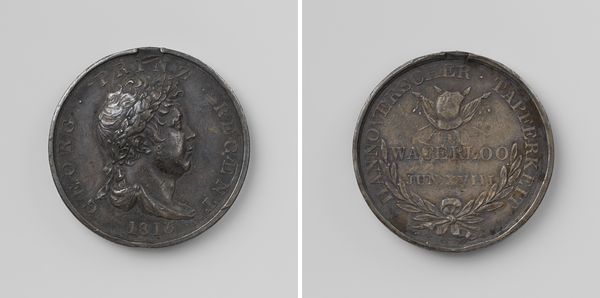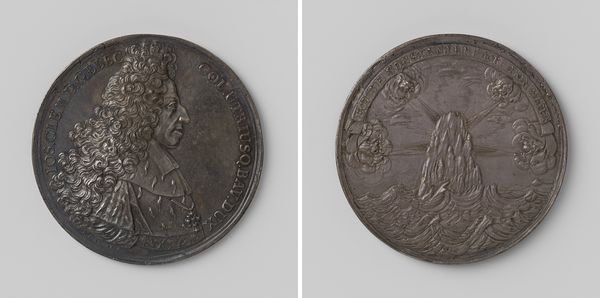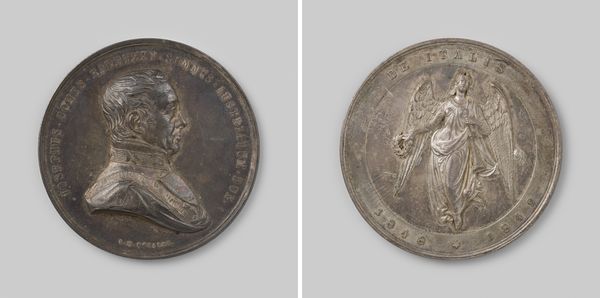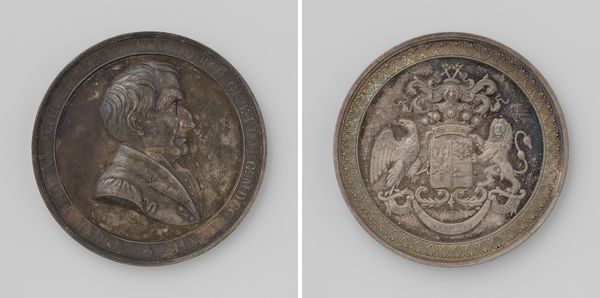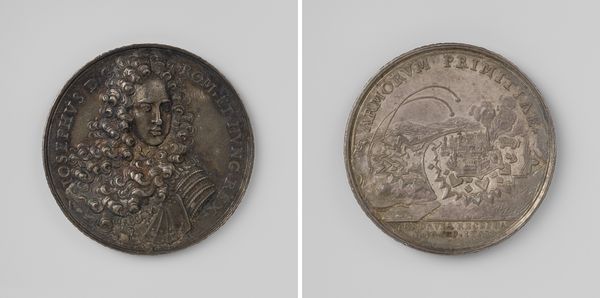
Tweehonderdjarig bestaan van de Hogeschool van Utrecht 1836
0:00
0:00
metal, relief, sculpture, engraving
#
portrait
#
neoclacissism
#
metal
#
sculpture
#
relief
#
sculpture
#
history-painting
#
engraving
Dimensions: diameter 4.3 cm, weight 21.73 gr
Copyright: Rijks Museum: Open Domain
Curator: Today we're examining a fascinating piece titled "Tweehonderdjarig bestaan van de Hogeschool van Utrecht," which translates to "Bicentennial of the University of Utrecht." It’s an engraving in metal, created by David van der Kellen in 1836, and resides in the Rijksmuseum. Editor: Wow, okay, first impression? It feels very serious. Like something you’d find buried in a time capsule. The sheen of the metal, the neoclassical style… It's all very...stately. Almost aggressively academic. Curator: Yes, the Neoclassical style lends itself to that air of authority and permanence. The artwork, in its essence, speaks to the institutionalization of knowledge and power within the University of Utrecht, and we should recognize that this historical milestone occurs during the colonial period and the reign of William I. Editor: It makes me wonder, who gets to celebrate this institution, and whose labor underwrites this grand history. I find it deeply strange when institutional achievements from the past are only framed within the success and not also consider where their achievements cause the subjugation of certain groups. Curator: The Minerva figure on one side reinforces this connection. The inscriptions surrounding the imagery is a declaration. And that Roman numeral date is intentionally bold! Editor: True! I wonder what a contemporary commemorative medal might look like. Probably a lot less severe and...bronze-y? The laurel wreath on the reverse seems a little ironic, it might suggest success to those who never participated in such achievement due to their ethnic background, or social-economic disadvantages. It looks, ultimately, rather exclusive, doesn't it? A two-sided piece can still lack perspective! Curator: It encapsulates the period's understanding of institutions and legacies, very focused on the achievement of historical subjects. The visual language of medals—their weight, their texture, the use of allegory—is intentionally designed to create an impression of lasting value. But there's definitely a critical reading to be done! Editor: Well, thanks for grounding my rather visceral response in something approaching history! It's made me consider the role art plays in preserving potentially unbalanced, selective histories. Curator: Indeed. Let's be grateful for art objects such as these. If we don't investigate them with our analytical toolkit we may remain stuck on one particular biased approach to the passage of time and our contribution to history as a whole.
Comments
No comments
Be the first to comment and join the conversation on the ultimate creative platform.


